Farmers Weekly Awards: Dairy farmer finalists 2020
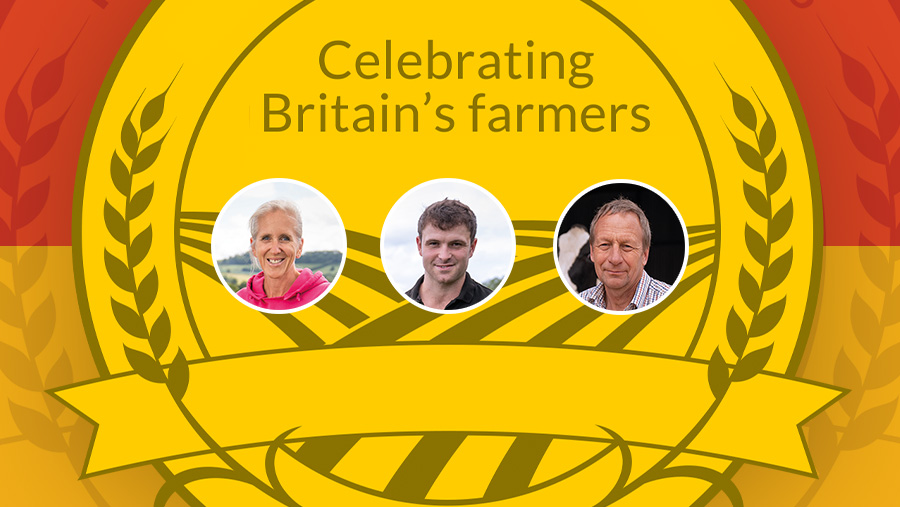
All three finalists are maximising milk from forage to reduce feed costs and improve margins.
The finalists
- Katrina Dunford
Southwood Common Farm, Evercreech, Shepton Mallet - Robert Mallett
Dickson and Mallett, Northleaze Farm, Highworth, Swindon - Max Tite
Tite Partners, Newmans Farm, Bagber, Sturminster Newton, Dorset
The judges
- Will Frost, last year’s winner
- Debbie James, Farmers Weekly reporter
- Andy Dodd, independent judge
See also: Farmers Weekly Awards 2019: Dairy Farmer of the Year
Katrina Dunford
Southwood Common Farm, Evercreech, Shepton Mallet
Katrina Dunford took on the management of two dairy farms with no previous experience after her husband died suddenly.
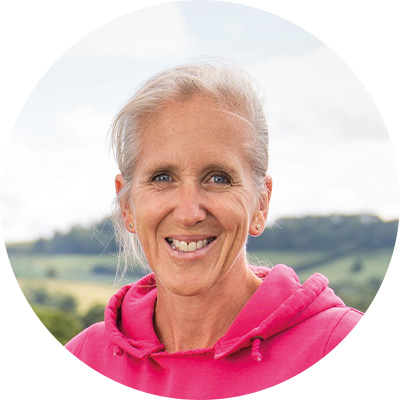
The former vet describes the intervening 10 years as an “unsurprising rollercoaster’’.
“I had to start on page one of ‘how to run a dairy farm’,’’ she recalls.
That rollercoaster had some bumps along the way, not least having to relinquish one of the farms when the tenancy ended, but with resilience, vision and attention to detail Katrina has created a strong business on the 128 hectares (ha) she now farms.
“I find myself in 2020 proud to be a British dairy farmer with a thriving herd of 240 spring block calving cows,’’ she says.
Breeding and cow management
Katrina made one of the biggest changes to the business just a year after she started farming, when she introduced Jersey genetics into the Holstein Friesian herd with the goal of increasing milk solids and producing as much milk from grass as possible.
New Zealand Friesian genetics produce the second-cross replacements.
AI is used for the first six weeks of breeding, with cows inseminated to a British Blue after heifer replacement needs are met. Hereford sweeper bulls are used until week 11.
All natural service is used on the heifers.
Sexed semen is used to reduce the number of unwanted dairy bull calves – of the 250 dairy straws used this year, 100 were sexed semen.
No bull calves have been destroyed on-farm for two years – they are reared for two weeks and sold.
This isn’t a requirement of Katrina’s milk contract until 2021 – she supplies the Tesco Sustainable Dairy Group (TSDG) through Arla – but it is among the ‘best practice’ measures she applies to all areas of the business.
“We do our best for Arla and Tesco, we want them to be proud of us,’’ she says.
Calving gets underway in February with the majority of heifers calving in the first three weeks of the 12-week block.
Technical efficiency
Grass is measured weekly and Agrinet is used for grass management and budgeting.
Despite a challenging year, with turnout delayed by two weeks until mid-February followed by a lengthy dry spell, average farm cover has not dropped under 2000kgDM/ha, even at a tight stocking rate of 4 cows a hectare (10/acre).
To extend the rotation, cows have been buffer fed surplus 2019 silage.
Katrina does not shy away from investing to improve efficiency and herd health.
A 24/48 milking parlour was installed in 2014 and the building which housed the old 16/16 parlour was converted into 50 extra cubicles.
After a spike in calf mortalities, a new calf rearing shed was built for 60 calves in 2019 and there have since been no cases of pneumonia or losses.
Business
Katrina is an advocate of hiring in professional expertise when needed and has forged close working relationships with key service providers.
“There is usually someone who is better at doing certain things than me so it is better to recruit and pay for outside help and learn from them.’’
She is also a firm believer in the benefits of sharing information with others – she is a member of the Arla R500 and Gillingham Grazers discussion groups.
“Businesses that share their figures are more resilient and progressive,’’ she reckons.
Katrina has built a loyal and accomplished team with a shared vision – herdsman Martin Rowell, assistant herdsman Connor Thorner, four part-time workers, and support from her son, Max, who is studying agriculture at Newcastle University.
Downsizing the business in 2018 after losing the tenanted farm was a blow but Katrina has approached it as an opportunity to be “better not bigger’’.
“My current goal is to make my herd perform as efficiently as possible by trying to improve as many performance factors as possible,’’ she says.
“I have faced and conquered many challenges over the last 10 years. To be perfectly honest I hope that the next 10 years are a bit simpler!’’
What the judges say:
Against all the odds, with incredible determination and by gaining knowledge, Katrina has created a very successful dairy business.’
Summary
What the judges liked
• A continual drive to make the business fit for the future
• A well-designed, modern dairy
• Maximising milk from grass with real attention to detail
• Superb communication skills in staff management
Farm Facts
• 225 spring calving Jersey x Holstein Friesian cows
• Annual average milk yield of 5000 litres at 4.5% butterfat and 3.5% protein with 3434 litres produced from forage
• In-parlour concentrates fed at a flat rate of 1kg/cow
• Agrinet for managing grass on the grazing platform
• ELS agreement
• Annual soil sampling
In numbers
• 23% – Replacement rate
• 9% – Empty rate
• 0.09kg – Concentrate use per litre
• 0 – Number of cases of pneumonia since 2019
• 100% – Number of bull calves that are kept on the farm before selling on
Robert Mallett
Dickson and Mallett, Northleaze Farm, Highworth, Swindon
Robert Mallett is demonstrating that it is possible to get good results from running a high yielding Holstein herd on a grazing system.
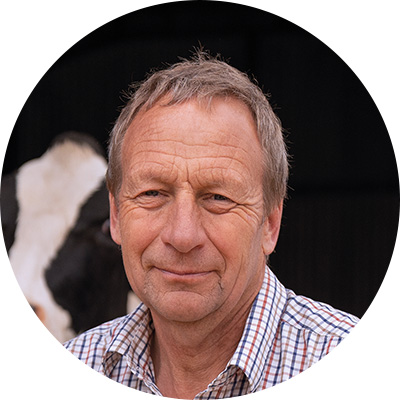
With excellent grassland management and targeted concentrate supplementation, Robert is meeting the nutritional requirements of cows producing 11,407 litres at grass whilst maintaining their bodyweight.
“Quality forage is what it’s all about,’’ he says. “Producing more milk from forage gives us more margin. It’s what pays the bills.’’
Robert farms with his wife, Maria, and son, David, and has spent the last 30 years focusing on breeding highly productive and healthy cows and keeping production costs low with minimal inputs.
This he has achieved by capturing 4,390 litres of milk from forage with an exceptionally low purchased feed cost of 6.3 pence per litre (ppl).
Technical efficiency
Northleaze Farm was purchased by Robert’s parents in 1988 and he has since nearly doubled land ownership to 180 hectares (ha) (445acres).
Striking a fine balance between grazing and buffer feeding helps Robert control production costs without compromising milk output and he achieves this by rotationally grazing mobs according to yield.
During the grazing season from March to November, highs are buffer-fed a total mixed ration (TMR) consisting of 20kg of dry matter (DM) a head daily, with the rest of their ration made up of fresh grass grazed in 1.1ha paddocks. They receive a flat rate of 3.5kg of concentrates in the parlour.
Intakes for the lows is grazed grass only from turnout and they are fed to yield in the parlour – up to a maximum of 6kg daily.
Breeding and cow management
Breeding high quality cows is a key focus of the business.
“My aim is to get as much milk as possible from as few cows as possible,’’ says Robert.
There is an emphasis on profitable lifetime index (PLI) and lifespan. “If you can get these, you will have cows that last. Efficiency pays the bills, not type,’’ he insists.
At £255, the pedigree herd is just outside the top 1% for PLI; youngstock are in the top 1% for PLI at £376 and lifespan at +104 days.
Robert has started genomic testing his females with the aim of selling lower index heifers.
Service starts on 15 November and cows are fitted with ear sensors to detect heats.
This has given Robert the confidence to use only sexed Holstein semen to breed replacements with performance-tested British Blue used when this requirement has been satisfied.
Transition cow management is a key focus of herd health management.
Cows are grouped and fed TMR and ad-lib straw for 21 days pre-calving. Wholecrop rye is used to balance the diet.
By getting the transition management right everything else follows in terms of calf viability, cows getting back in calf, good production and fewer health issues, says Robert.
Monitoring urea and pH levels has helped too with only three cases of milk fever last year. “If you eliminate milk fever everything else is easy,’’ Robert suggests.
“Metabolic diseases are optional; with good management they can almost be eliminated.’’
Business
To provide another income stream and as part of a succession plan to bring David into the business, a beef fattening enterprise was established last year with a £100,000 investment in a new shed.
Beef from the dairy herd are intensively fed home-grown forage to finish 14 months.
The Malletts hope it will allow them to make a decent profit from dairy bull calves which has often been devalued by TB restrictions.
One of the biggest challenges in recent months has been milk price.
As a Freshways supplier, the price dipped as low as 17ppl and milk produced over two days had to be discarded.
Robert admits his milk contract makes the business vulnerable but he is optimistic. “I have faith that Freshways will keep going, things are heading in the right direction. In two years’ time, it may be that Freshways is the right place to be.’’
He believes that by keeping cost of production low and with attention to detail, he can drive the business through fluctuations associated with dairying.
What the judges say:
Robert has built a highly efficient herd of cows with incredible attention to detail in every aspect of herd and grass management.’
Summary
The judges liked…
• Maximises grazed grass to produce terrific milk yields
• A great team of family and staff working together with shared ambition
• In control of every detail of the business
• Animal health standards go beyond requirements of assurance schemes.
Farm facts
• 230-cow milking herd
• 140 heifer replacements
• 110 beef cattle
• Three-times-a-day milking
• 20-20 direct line parlour
• Milking ration consists of 40% grass silage, 40% maize and 20% wholecrop rye, all homegrown, with a premix of soya, rapeseed expeller, nutritionally improved straw, molasses, minerals and wheat
• Youngstock weighed every six weeks
• Reseeding every six years with Aber High Sugar ryegrasses
• Three full time staff.
The numbers
• 1.1ha Size of each paddock
• 2.6 million – Litres of milk sold annually
• 24% – Replacement rate
• 24.2 – Age at first calving
• 382 days – Calving index
• 14% – Number of cows receiving antibiotics at drying off
• 6mg/PCU – Annual antibiotics use
Max Tite
Tite Partners, Newmans Farm, Bagber, Sturminster Newton, Dorset
Max Tite’s approach to milk production is evidence that capturing milk from forage is achievable in herds at the higher end of the yield spectrum.
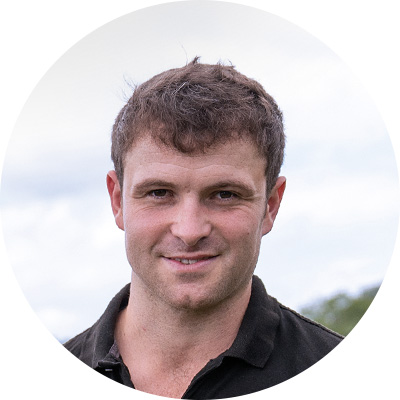
At 5,930 litres, milk from forage accounts for more than half the autumn-calving Holstein herd’s 9,528 average yield.
By working hard to improve forage quality and presentation, the cows are consuming 18.78kg dry matter (DM) from forage daily.
This has been key to keeping the herd profitable through periods of milk price volatility.
The farm had a high input high output system when Max joined his parents, Elizabeth and Paul, in the 200-hectare (ha) (494acres) business six years ago.
A low milk price in 2016 forced a rethink.
Technical efficiency
With the business spending £100,000 a year on bought-in feed, Max says the obvious thing was to lose that.
“We started to realise the quality of the forage we were producing. The cows kept performing and that has since underpinned everything we do.’’
Central to that is maize with 78 (193acres) being grown this year.
“Maize is one of the most efficient feeds you can grow because its yield is so high, per acre per cow it gives us the best return,’’ says Max.
Concentrate use per litre now stands at 0.18kg – an achievement in itself for a high-production herd.
Cover crops are planted in all maize fields after harvesting to reduce the environmental impact of maize cultivation.
“We had no bare fields last winter and we are also trialling undersowing,’’ Max explains.
Twenty hectares (49 acres) of maize are being grown using no-till techniques this year.
Breeding and cow management
Cow health is at the forefront of Max’s approach to herd management, from sand-bedded cubicles to good dairy hygiene, and improvements have been achieved while reducing antibiotics use to 5mg/PCU, from 8.1mg in 2018.
Antibiotic dry cow therapy was used on only 10% of the herd at drying off this year.
The herd has a high health status herd as demonstrated by its ranking in the top 5% of the Tesco Sustainable Dairy Group (TSDG) for herd health – milk has been supplied to the TSDG through Arla since 2017.
The average bulk somatic cell count (SCC) for the herd is 90,000 cells/ml and bactoscan averages nine – a reflection of milking protocols, cow hygiene and cleanliness. Only 10% of cows received antibiotics at drying off this year.
“Reduced and responsible antibiotics use and great herd health are hugely important for the future of the dairy industry,’’ Max suggests.
Breeding is a key focus, a culmination of 30 years of an approach that wasn’t considered stylish at that time.
“We have always bred for fat and protein – our rolling average is 4.42% butterfat and 3.58% protein – and we have never compromised on feet and udder type,’’ says Max.
“Cows are the bottom line of our business, messing that up is the quickest way to lose money.’’
Only sexed semen is used to produce dairy replacements.
All heifers and early calving cows with no health problems are served to dairy for the first and second service and then to beef. All other cows are bred to a British Blue or Aberdeen Angus.
Bulls are carefully selected for excellent calving ease, positive fat and protein kgs and % and negative SCC.
Business
Max is the third generation of his family to milk cows at Newmans Farm and he is already growing the business as he took on the tenancy of a 160-cow organic dairy farm a mile from the home farm last year.
The business employs 10 staff across the two farms – three full-time and seven part-timers – with all staff involved in all aspects of the farm. This provides a resilient business framework as everyone can step-up when needed.
The staff and the consultants and contractors the Tites work with all buy in to their farm ethos and help them to achieve their goals.
“We feel very lucky to have found such a good group of people to work with,’’ says Max.
What the judges say:
Max has ambition and drive in abundance. His excellent attention to detail is evident from his cropping and all round forage management.
Summary
The judges liked…
• Producing excellent milk yields from forage with cows looking in superb order
• Uses expert advice and staff training to achieve top results
• Works closely with milk buyer to make positive changes to the business
Farm facts
• 200 Holstein Friesian cows
• Closed herd for more than 25 years
• All slurry applied using dribble bar
• 78ha maize grown (193acres)
The numbers
• £240 – Herd average £PLI
• 24.5% – Replacement rate
• 88% – Submission rate in first three weeks of breeding
Sponsor’s message
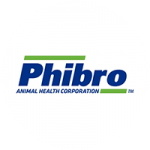 “Phibro are proud to sponsor the Dairy Farmer of the Year Award. The three finalists are excellent role models for British dairying. Their success bears testament to the power of hard work, dedication and passion for farming.”
“Phibro are proud to sponsor the Dairy Farmer of the Year Award. The three finalists are excellent role models for British dairying. Their success bears testament to the power of hard work, dedication and passion for farming.”
Navaratnam Partheeban
Veterinary dairy technical specialist, Phibro Animal Health
